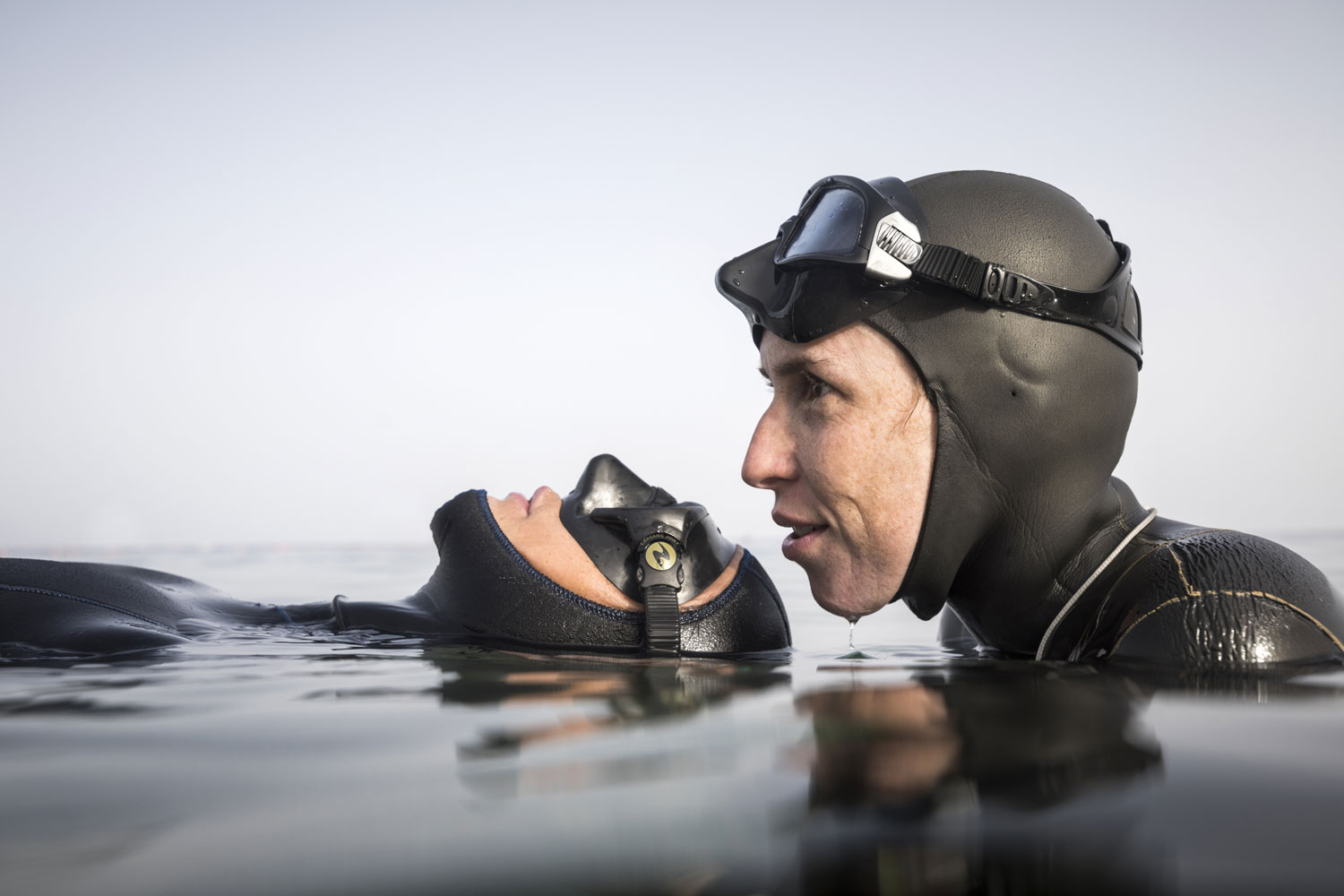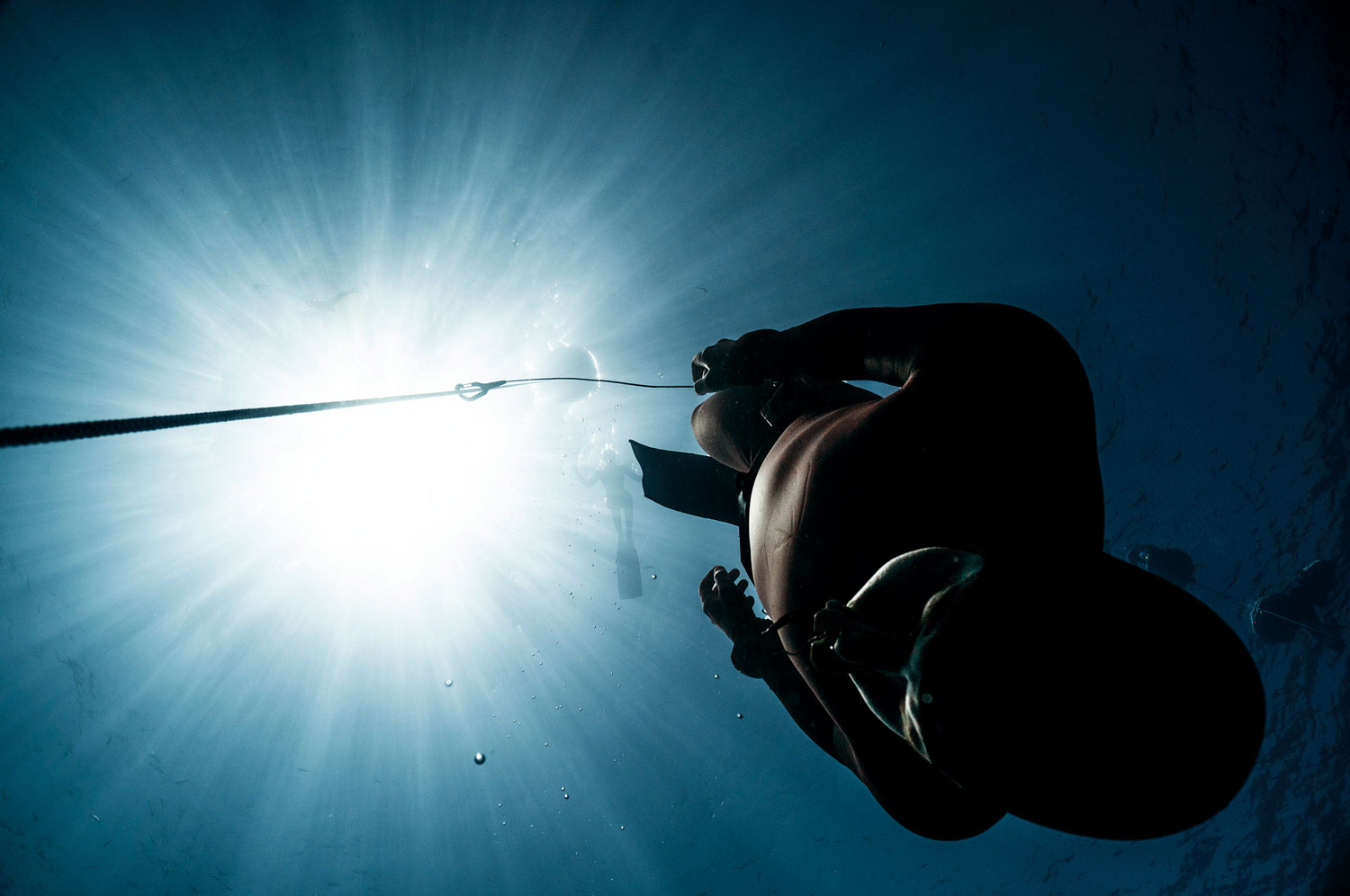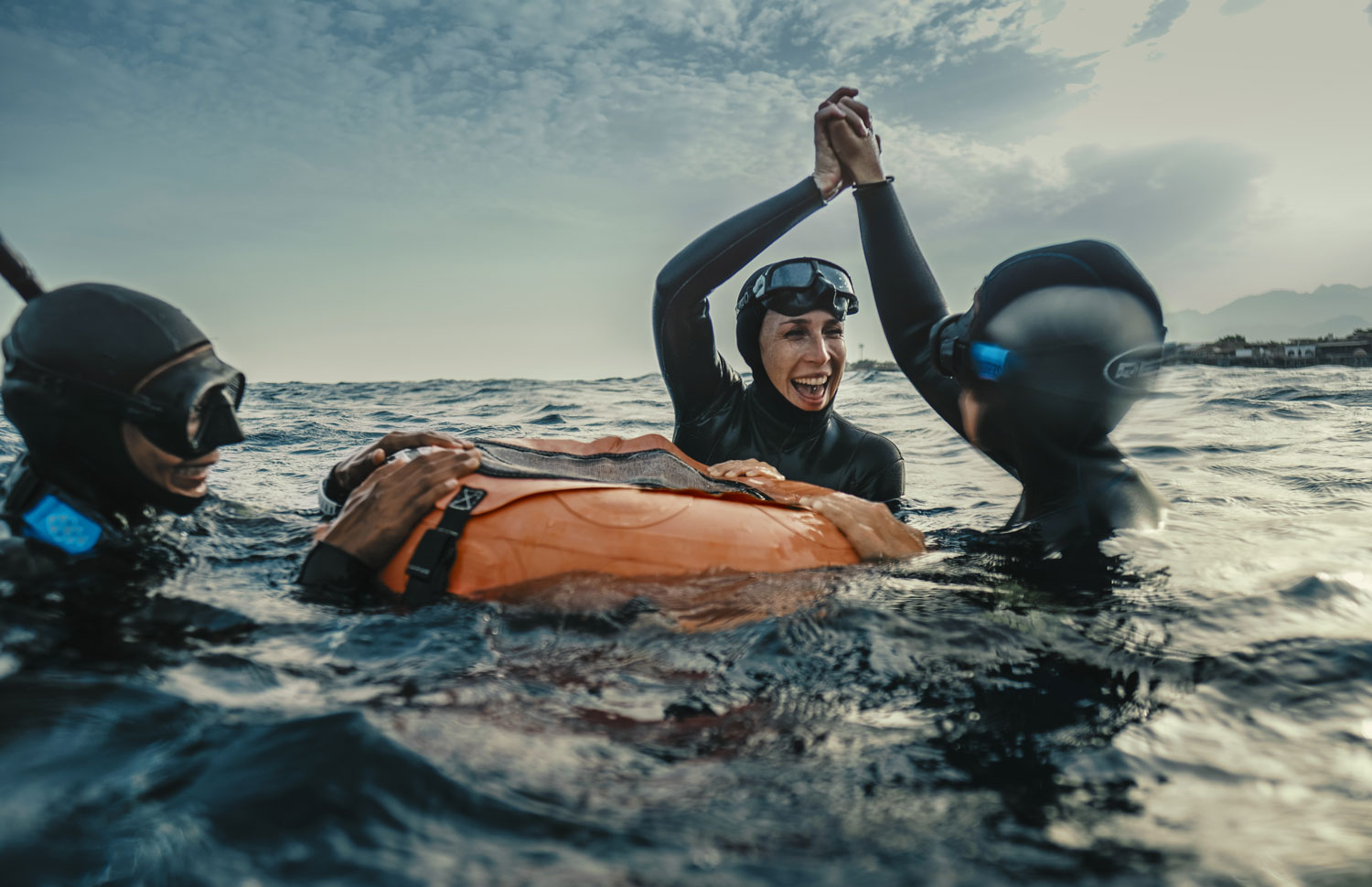Dive stories
Adaptations we experience in freediving
How our bodies adapt in freediving is fascinating and intriguing.
The more an athlete trains, the more adapted the body can become. A top level freediver doesn’t just dive to over 100m deep on a whim. It can take them years of training to reach these depths. They don’t only have to work on technique and breath hold, they must also adapt their mind and body to handle the extreme conditions of such a deep dive. This comes with gradual depth increase and repetitive dives.
There is still a lot we don’t know about the body while freediving. But I’m going to take a look at what we do know, and ask experts in the field what they think based on their years of professional freediving experience.
Let’s dive into the adaptations we experience in freediving.
Meet the experts
Nathan Vinski is well renowned in the freediving world as a coach for high performing athletes, as well as being a deep diver himself. He and his partner Sarah founded Train Freediving and offer both in-person as well as distance coaching for freedivers of all levels. Check out their Instagram for daily tips, advice, and inspiration. Nathan recommends DAN insurance to his students and believes it’s a good idea to have dive insurance as a freediver.

Nathan by Elin Larsgren
Carlos Diezel is a freediving athlete and national record holder for Brazil, he’s also part owner of Dahab Freedivers; a world class freediving center in Dahab, Egypt. Carlos lives in Dahab year-round with his family and splits his time there between training and teaching. Carlos renews his DAN insurance every year so that he can teach and train with peace of mind.

Carlos by Lily Crespy
Lily Crespy is a freediving coach and athlete from France. She is also a part owner of Dahab Freedivers, as well as being founder of Enki Coaching where she offers personal and distance coaching. Lily posts helpful videos for budding freediving athletes regularly on her Instagram. Lily also recommends DAN insurance to her students.

Lily by Nacho Pelaez
What adaptations might freedivers experience underwater?
The thought-provoking topic of adaptations in freediving is somewhat still unexplored. Nathan told me: “When it comes to ‘depth adaptation’ there is a lot of argument within the freediving community about what is actually going on. Unfortunately there haven't been very many good quality studies to show exactly what changes in the body, but we do have some logical and speculative ideas about what happens.”
Lily says adaptations in freediving occur in many ways: “For me, adaptation to depth includes everything: Flexibility of the lungs but also having the muscle strength and proper technique to be able to go down and back up in the most efficient way, having the equalization technique and also the mental state of mind that will allow you to get there without injury. So whether I'm doing a shallow session working specifically on equalization, or doing RV dives to work on lungs adaptation to pressure, or doing long hangs to work on mental strength and hypoxia, these are all for me part of adaptation training to depth.”
There are various ways that our bodies and minds might perform differently when at depth. Some have been widely researched, others we are still learning about. The Bajau people of SouthEast Asia live on the water and have been freediving for their food for generations. They are famous worldwide for their breath-holding capabilities. Studies have discovered that the Bajau people have evolved to have a larger spleen than that of an average person, this provides them with an increased reservoir for oxygenated red blood cells, which is beneficial for freediving. Even the ones that don’t dive have an enlarged spleen, which is fascinating. This is an excellent example of how the body can adapt to help us to freedive deeper and for longer.
Let’s look at some other adaptations…
The Mammalian Dive Reflex
The first thing we will explore is probably the most helpful to us as freedivers; The mammalian dive reflex: A temporary adaptation that our bodies experience while freediving. If you’ve done a freediving course you will have heard of this phenomenon (also known as the dive response): It’s a very interesting adaptation that happens to humans when our faces are cooled by water or when we hold our breath. It’s a physiological mechanism that allows us to prepare for a lower level of oxygen.
Now, everyone experiences this reflex, not just deep freedivers. However, it can be trained; as freedivers dive more and more the dive reflex becomes stronger, and it can kick in faster. Most beginner to intermediate freedivers need to perform warm-up dives to allow the dive reflex to kick in, but advanced divers can skip these and go straight for their deep dive, thanks to their trained and adapted dive reflex.
What actually happens during this dive reflex?…
The first part of the reflex is the slowing of the heart rate (bradycardia). The heart rate can slow down to around 30%, or even as much as 50% for high performing freediving athletes.
Another part of the dive response is peripheral vasoconstriction; this is where blood vessels narrow to reduce blood flow to the limbs. This prioritises the oxygen for vital organs like the brain and heart.
Blood shift also occurs as part of the dive response: Blood from the extremities fills the capillaries in the lungs to take up lost air spaces. Nathan says bloodshift is prevalent in many diving mammals but it’s unclear how bloodshift improves as we train as freedivers: “Either the bloodshift itself becomes more efficient (more blood is shifted), or the lungs become more tolerant of accepting the extra blood by a thickening / strengthening of the alveolar walls. A combination of the two is the most likely.”
Carlos agrees with Nathan saying: “I’m sure this reflex can be trained with repetitions of certain depths, and maybe also FRC (functional residual capacity) dives.”
The spleen effect is apparent during the mammalian dive reflex. This is where the spleen releases more red blood cells into the blood, which increases the blood’s ability to carry oxygen and allows for a longer breath hold. (This is the explanation behind the larger spleens of the Bajau people.)
Other side effects from the mammalian dive reflex are; increased need to pee (immersion diuresis), this happens as a way for the body to try to counteract the increased volume of blood from the peripheral vasoconstriction phase, and muscle fatigue from lactic acid build up.

Nathan by Elin Larsgren
Flexibility of the lungs
Nathan says that the main physical adaptation we see when freediving frequently is the increased flexibility of the muscles and cartilage around the lungs and chest: “This would occur as a product of the water pressure literally pressing the ribcage inwards to the point of stretching the relevant tissues.”
Many deep freediving athletes focus alot on improving lung flexibility as part of their training, to prepare them for the increased pressure at depth. Think about it, at 80m deep we experience nine bars of pressure (as opposed to one bar at the surface), that’s nine times more pressure that we are subjecting our lungs to. It’s important to prepare our lungs as best we can when we start thinking of diving to these depths. Carlos claims that dry exercises are a vital part of his own training: “Lung stretches on empty lungs and on full lungs help a lot, they are essential in training to adapt to depth.”
When trying to gain adaptation of the lungs for freediving it’s important to add depth gradually when training. Even if a diver had the confidence, relaxation level, and breath hold time to dive to 100m deep in their first week of taking up freediving…this would be an extremely risky thing to do, as their lungs are simply not ready for this level of pressure yet.
Nathan suggests exhale training for deep diving as a way to help the lungs to adapt: “This means starting your depth dives on either a passive exhale (FRC) or full exhale (RV). This allows the diver to expose themself to the kinds of compressed lung volumes that they would experience at the depth(s) they want to achieve on full lungs at significantly shallower divers. If you think about it, a 60m dive can be simulated by only diving to around 25m on FRC, or even 10-12m on RV. This allows for many more repetitions per session and more total exposure to these small, compressed lungs volumes.” But he reminds us to progress slowly and never push to our maximum capabilities: “The point is to accumulate many repetitions of a gentle stretch. You should stop all of your exhale dives if you feel any discomfort on the sternum or trachea. Proper adaptation means that these feelings GO AWAY, not that you can PUSH THROUGH them.”
Lily agrees with this: “Adaptations for deep freediving can take different amounts of time depending on many factors. In any case, the name of the game in deep freediving is PATIENCE. You should never rush your progress or push it.”

Lily by Elin Larsgren
Stronger air spaces and trachea
Nathan suggests that repetitive freediving might cause adaptations in the air spaces and trachea: “We can also assume that other air spaces like the trachea become stronger, thicker, or more flexible again as a product of repeated compression at depth.” However there are no studies to confirm this yet.
Many deep freedivers practice Uddiyana Bandha as part of their morning yoga routine to help stretch the trachea, improve flexibility, and simulate the feeling of pressure at depth. This involves exhaling fully, locking the throat to hold the breath, pulling in the abdominals under the rib cage, and pausing before releasing and breathing normally. It’s a good idea to seek guidance from an experienced yoga instructor before trying this on your own.
It’s truly fascinating how our bodies can adapt to freediving. Stay tuned for part two, where we will explore mental adaptations, hypoxia and CO2 adaptations, and hear from our experts about how we can train to prepare for these adaptations.
Sources:


